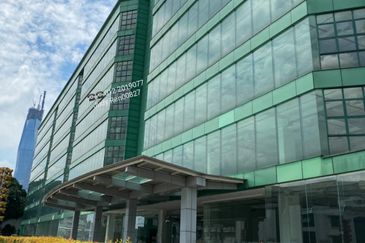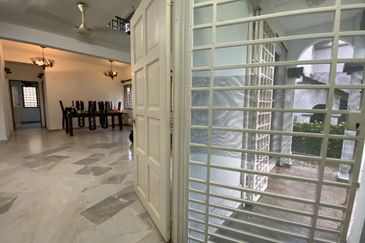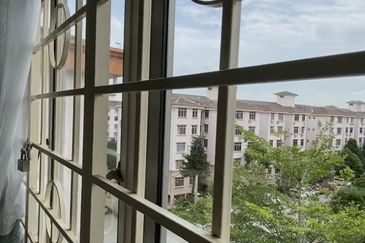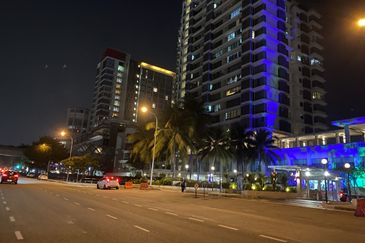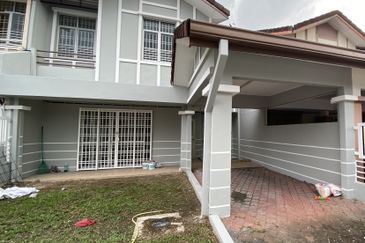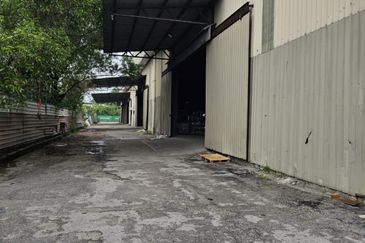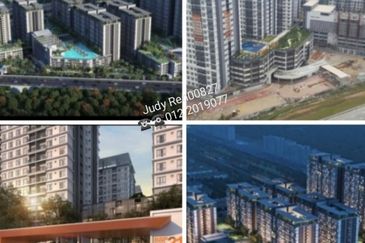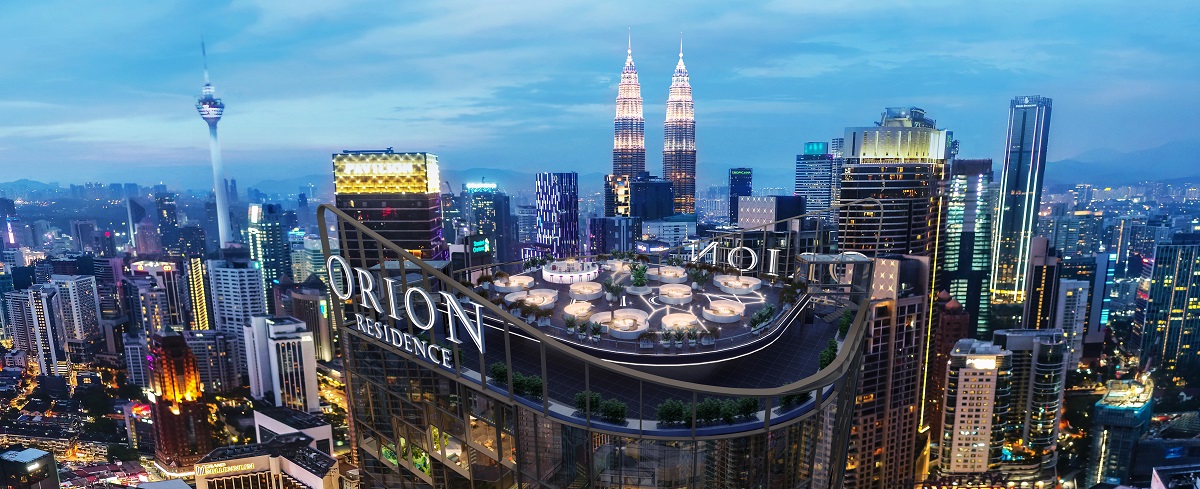Synonymous in years past for its factories and manufacturing plants, Section 13 is on the cusp of “reinventing” itself into a vibrant commercial hub in the bustling city of Petaling Jaya.
Factories have been operating in Section 13 since the 1960s, but in recent years however, the Petaling Jaya City Council (MBPJ) realised its growing potential for commercial activities. Hence, it provided an exception that allows “limited commercial” activities in the area according to strict guidelines. As a result, on the thoroughfares of Jalan Universiti, Jalan Semangat and Jalan Kemajuan, office workers and residents can now enjoy the offerings of Jaya One, Jaya 33 and myriad restaurants and outlets.
More of such businesses could spring up in the area by next year if a plan that facilitates the conversion of land titles from industrial to either “mixed use or limited commercial” status is approved by the Selangor government. This will free landowners to develop their plots as they see fit within specific guidelines set down by the Local Draft Plan. The potential is certainly huge as Section 13 covers over 220 acres. Many landowners and developers are salivating at the prospect. But is all the attention and anticipation warranted?  Special Area Plan
Special Area Plan
In the 1990s, the then Petaling Jaya Municipal Council (MPPJ) tabled a proposal to convert land use in Section 13 from industrial to commercial, but it drew so many objections that it was shelved.
In 2006, interest was renewed when Tetap Tiara Sdn Bhd executive director Wong Chee Kooi formed a committee representing landowners in Section 13 to work together with MBPJ to revive the conversion plan.
This time round, progress was smoother and MBPJ, with the help of a consultant, came up with a Special Area Plan (Rancangan Kawasan Khas or RKK) that was ready for public scrutiny in 2008. A hearing was held in February 2009 to allow interested parties to air their views and give comments.
Under RKK, there would be two main uses for selected areas in Section 13: mixed use or limited commercial development. Depending on the land use, RKK stipulates conditions relating to plot ratio, maximum build-up, height limit restrictions and commercial activities. It also proposed that no industrial activities be encouraged and no new industrial manufacturing activities be allowed in Section 13, although existing factories could continue operating. Suggestions were made to improve traffic management, including installing traffic lights at the Rothmans roundabout and widening Jalan 17/21, Jalan 17/1 and Jalan 13/4. There was also a proposal to build pedestrian walkways in Jalan Kemajuan, Jalan Universiti, Jalan Semangat and throughout Section 13.
The RKK was scrutinised with many views and concerns expressed during the public hearing in February, with the two main issues being the traffic situation and plot ratios.
Several parties were worried that the existing infrastructure would not be able to cope with the influx of vehicles with the increase in white-collar workers drawn to the new job opportunities in the area. Others felt the plot ratios were not high enough, while others thought these were too high.
In the end, all the feedback was collected for MBPJ council members to deliberate and make revisions accordingly to the existing plan.
Recently, an official of MBPJ’s public relations department informed City & Country that the plan is still undergoing revision. The official also added that the revised plan may include requirements for sky bridges linking buildings and constructing green structures for more sustainable development.
Benefits of conversion
Converting the land status from industrial to mixed use or limited commercial development will bring many benefits to various parties, especially landowners who wish to develop their properties. The exercise will also be a boon to residents of greater Petaling Jaya as more jobs will be generated, which in turn will benefit the city as a whole.
“Section 13 is generally seen as too valuable an area to remain industrial due to the scarcity of good commercial land,” says Jerome Hong, managing director of PA International Property Consultants (KL). “Hence, the proposed conversion presents ideal development opportunities to landowners.” Agreeing with Hong’s assessment is Victor Lim, managing director of iProp Realty, who says Section 13 is more ideal for commercial use as tougher environmental issues, higher rent and/or land costs and logistical reasons have forced heavy and light industrial factories to move out to areas like Shah Alam, Klang, Sungai Buloh and Puchong.
Agreeing with Hong’s assessment is Victor Lim, managing director of iProp Realty, who says Section 13 is more ideal for commercial use as tougher environmental issues, higher rent and/or land costs and logistical reasons have forced heavy and light industrial factories to move out to areas like Shah Alam, Klang, Sungai Buloh and Puchong.
James Tan, associate director of Raine & Horne International Zaki + Partners, believes Section 13’s “strategic position” is key to its future success. “This is one of the most accessible areas in the Klang Valley as it is surrounded by three major dual carriageways in an old established neighbourhood. This area was a manufacturing hub in the 1970s, but is now turning into a popular commercial, distribution, retailing and education centre,” he says.
Though there are no specific plans by landowners to develop their land just yet, they can still consider the various options available to them. Under MBPJ’s Local Draft Plan, if the area is zoned for mixed use or limited commercial development, the activities permitted will include:
• IT design and development centres;
• Anything related to computers and multimedia;
• Engineering, biotechnology and other high-technology industries;
• Medical and research facilities;
• Sales and training hubs;
• Offices, distribution outlets and technical service complexes; and
• Public facilities such as car parks and public parks.
Other uses for the land, subject to conditions, are setting up shops, showrooms, restaurants, entertainment outlets, convenience stores, launderettes, religious centres, kindergartens, nurseries, hospitals, private education hubs and residential sites.
Developments that are not allowed are shopping complexes and hypermarkets, hotels, serviced apartments, petrol stations, banks and workshops.
At the end, whatever is permitted to be built is expected to provide higher returns for owners and developers.
Says Hong: “Monthly rental rates of factories are about RM1 to RM1.50 psf whereas limited commercial space — low-rise buildings — can garner rates of between RM2 and RM4 psf, depending on the building condition and so on. For example, the current asking rent for Quill 9 is RM4.30 psf.”
Quill 9 is a 6-storey corporate office development in Section 19, a short distance from Section 13, with a nett lettable space of nearly 280,000 sq ft.
Agreeing with Hong’s assessment, Raine & Horne’s Tan believes rents of RM3 to 3.50 psf for office space and RM5 to RM6 psf for retail can be obtained, with land values going for RM270 to RM300 psf upon conversion.
Several recorded transactions in Section 13 in recent years reveal the potential for appreciation in land values.
In 2004, a lot in Jalan Universiti measuring 473,768 sq ft was sold for about RM46.9 million (RM99 psf). On Jalan Kemajuan, a property measuring 94,592 sq ft went for RM11.5 million (RM121psf).
In 2006, another piece of land on Jalan Kemajuan measuring 78,798 sq ft was sold for RM14.2 million (RM180 psf), and a plot measuring about 20,005 sq ft on Lorong 13/6A went for RM3 million (RM149 psf).
High cost of conversion
While property values and returns in Section 13 look promising, it will be a different matter when the land conversion plan is gazetted. It does not mean that landowners can immediately start building as they will have to apply for their land titles to be changed as the whole of Section 13 is considered industrial land.
“The downside to the conversion process is its high cost. Additional premiums must be paid for conversion from industrial to commercial status,” says Hong. “There is also extra cost involved to extend the lease as most properties within Section 13 are leasehold (99 years), with about 60 plus years remaining.”
iProp Realty’s Lim shares that owners may have to meet other additional costs to convert and upgrade existing structures to suit specific commercial use. Property owners also need to discern the needs of the market or they may end up getting burnt.
Raine & Horne’s Tan believes that the timing for the conversion has to be right or else holding costs will rise if the property is not developed.
These extra financial elements could put a dent in any developer or owner’s plans when it comes to building a commercial hub. However, the long-term benefits are expected to outweigh the initial conversion and redevelopment costs.
Future prospects
With all this potential development, landowners and developers in Section 13 can look forward to doing new ways of business, both individually and collectively. Landowners can sell out and cash in their millions, while those with adjacent properties can join forces to build a larger structure, or the property can continue as it is without any change. Whatever the case, values are bound to increase.
The profile of Section 13 can be raised even higher if it is accorded Multimedia Super Corridor (MSC) status. Hong says this will attract more multinational companies, further boosting the vibrancy of the area.
Says Stewart LaBrooy, CEO/executive director of Axis REIT Managers: “We need to find out what needs to be done in terms of attracting the right industries to PJ; here we are talking about tomorrow’s industries. By awarding the area MSC status, we will leverage the strengths of the city with its large number of colleges and universities, a strong middle class, a big pool of knowledge workers, high per capita consumption and excellent connectivity.”
LaBrooy, however, stresses that local authorities have to improve the infrastructure to obtain MSC status.
Axis REIT Managers is a real estate investment trust that manages properties or assets owned by OSK Trustees. The trust currently manages three properties in Section 13 — Axis Business Park, Kompakar Building on Jalan 13/4, and Infinite Centre on Jalan 13/6. All three operate as office-cum- warehouse facilities and, except for Infinite Centre, are 100% occupied as stated on the Axis REIT website. LaBrooy shares that the properties are well developed and any plans for redevelopment may involve increasing the office component in these buildings.
CC Lai, Maha Tenaga Sdn Bhd’s managing director, believes that if the authorities can increase the plot ratios and do away with building height restrictions, it can lead to a more uniform landscape in Section 13. “If there are quality buildings, and modern and well-planned amenities with the appropriate ambience, it will certainly attract large companies to relocate to the area,” he says.
A property investment company specialising in commercial property, Maha Tenaga owns two plots of land in Section 13. One, measuring two acres on Jalan Kemajuan, is a mixed development property, while the other — a one-acre property on Jalan 13/2 — is a car service centre. Lai says there are no plans to redevelop these areas in the near future even after the land conversion has been gazetted.
While some stakeholders in Section 13 have no immediate plans for redevelopment, there are those who are patiently waiting to develop theirs. Che King Tow, managing director of Jaya 33, has plans for an office block adjacent to its commercial mall, where the old Sisson’s paint factory used to stand, and believes it will be successful.
Che says PJ can offer cheaper rental rates because of the comparatively lower cost of construction in the area. “The buildings need not be iconic but functional as they can cater for companies that want low rents but plenty of space,” he adds.
Mulpha International Bhd, which has its premises close to the Rothmans roundabout, is also planning to do something with its property although nothing has been finalised, says its CEO Lai Meng.
Tetap Tiara, the developer of Jaya One, is mulling plans for development of a plot next to Jaya One, but is taking its time deciding what to build, says Charles Wong, son of Wong Chee Kooi, both executive directors of Tetap Tiara.
The younger Wong believes that for Section 13 to reach its full potential, it will require the joint efforts of various parties. “One of the things I would like to see is a closer working relationship between the private and public sectors. In places, such as Australia, the US and the UK, they would form a development cooperative comprising developers, architects, and city hall to ensure that the master plan is implemented,” he says.
The first step to a possible regeneration of the entire Section 13 has been taken. “MBPJ has been open-minded in the past three years, working with all the landowners of Section 13. I consider it a good partnership and hope that the process of getting approval will not be too long,” says Chee Kooi. If all goes well, it is expected that RKK will be gazetted some time in 2010, barring any delays.
This dynamic partnership may be the thrust that will enable Section 13 to become a new commercial landmark in the Klang Valley. However, the wait for approval continues.
This article appeared in City & Country, the property pullout of The Edge Malaysia, Issue 762, July 6-12, 2009
TOP PICKS BY EDGEPROP

Subang Perdana Goodyear Court 10
Subang Jaya, Selangor

Subang Perdana Goodyear Court 10
Subang Jaya, Selangor

Subang Perdana Goodyear Court 10
Subang Jaya, Selangor
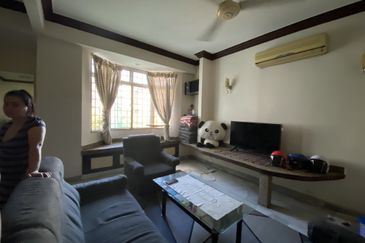
Subang Perdana Goodyear Court 10
Subang Jaya, Selangor

Subang Perdana Goodyear Court 10
Subang Jaya, Selangor
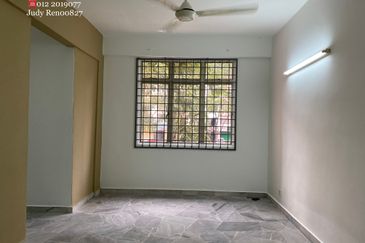
Subang Perdana Goodyear Court 10
Subang Jaya, Selangor
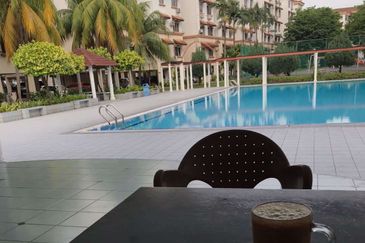
Subang Perdana Goodyear Court 10
Subang Jaya, Selangor

Petaling Jaya Commercial City
Petaling Jaya, Selangor

